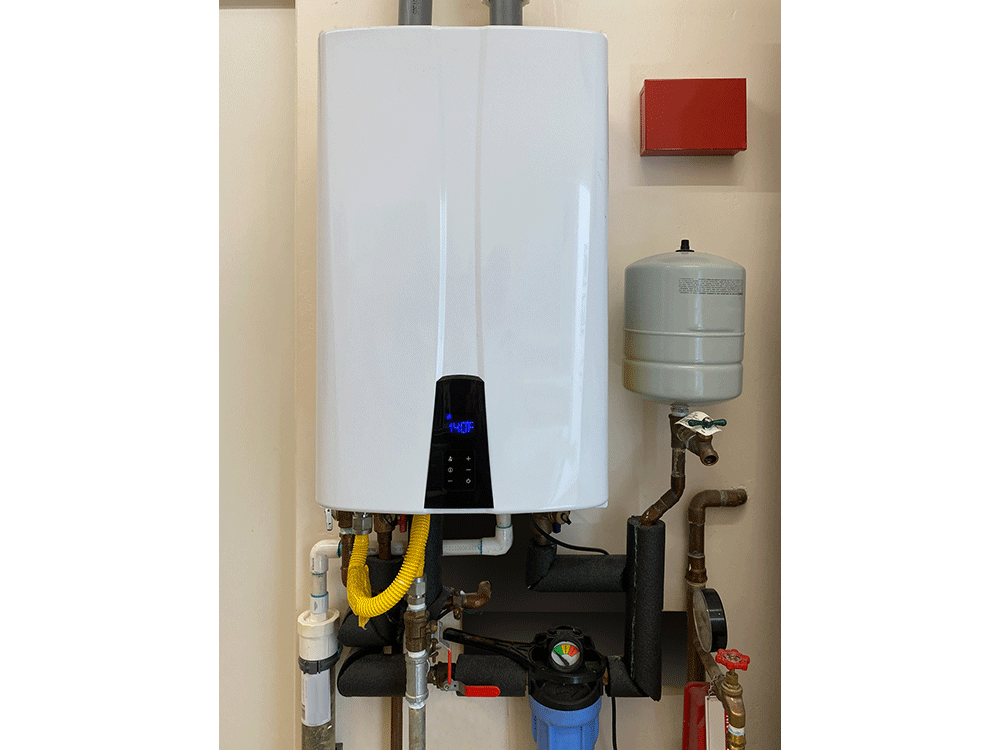You may be at a point in your homeownership when you are questioning whether a tankless or traditional water heater would be the better investment for your home. There are many factors that have to be considered in order to make a solid, educated decision.
Some of these include the upfront cost, the cost savings over time, the amount of hot water your household uses each day, and others.
The U.S. Department of Energy states that tankless water heaters are up to 34% more energy-efficient than traditional tank water heaters. This number is based on the usage of around 41 gallons of water per day. Even if you use twice that amount of water each day, tankless water heaters are still up to 14% more efficient.
Main Differences between Traditional and Tankless Water Heaters: How They Work
Let’s start by taking a look at some of the main differences between the two types of water heaters.
Tankless Water Heaters
A tankless water heater weighs 25 pounds on average. These are often mounted up on a wall and take up only about two square feet of space. The versatility in placement that tankless water heaters offer means they can fit just about anywhere. This would be a big benefit to people who currently have a giant traditional tank water heater taking up an entire closet or a huge portion of a garage.
A tankless water heater will warm the water as it is pulled through the unit, which is very different from the way traditional tanks handle water.
Traditional Water Heaters
Yes, traditional water heaters are big and bulky; they require a lot of space. Water is kept inside of a storage tank at a consistent temperature, ready for use when you turn a hot water faucet on within the home. However, as hot water is removed from the tank, cold water enters it in order to refill the tank.
The resulting temperature of the water within drops because of this, which is why people often have to keep turning the shower dial until they finally run out of hot water.
Cost
One of the biggest differences between these two types of water heaters relates to cost. A tankless water heater will cost you more upfront; however, the long-term savings on your energy bills will offset that cost.
The exact amount of your eventual savings will depend on your usage habits, the cost of the system, installation costs, your location, and the differences between your new water heater and your old one. If your current system is inefficient and old, you should expect a faster payoff.
Temperature
Traditional water heaters must be set to maintain an internal water temperature of at least 120 degrees Fahrenheit in order to prevent the growth of various types of harmful bacteria in the tank.
However, since tankless water heaters have no standing warm water, bacteria is not a concern. The water temperature can be kept lower, which reduces the energy the system uses and also reduces your energy bills.
Water Filter Needs
Generally speaking, it’s recommended that tankless water heaters have a filtration system installed to filter water before it reaches the unit. Minerals, sediment, and debris can all damage heating elements within the unit. These filters are only a few dollars each and only require changing every 2-3 months.
The Bottom Line: To Buy or Not to Buy?
The benefits of having a tankless water heater can significantly outweigh the drawbacks, and more homeowners are switching to tankless systems with every passing year. For help deciding which tankless water heater is the right choice for your home, contact the experts at A-1 Guaranteed Heating & Air, Inc.

























